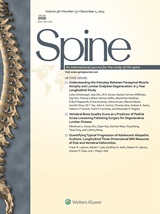
Lumbar Segmental Stabilization Exercises for Patients With Lumbar Spondylolysis & Spondylolisthesis

Lumbar Segmental Stabilization Exercises for Patients With Lumbar Spondylolysis & Spondylolisthesis
Effectiveness of Lumbar Segmental Stabilization Exercises in Managing Disability and Pain Intensity Among Patients With Lumbar Spondylolysis and Spondylolisthesis: A Systematic Review and Meta-analysis of Randomized Controlled Trials.
Spine (Phila Pa 1976) . 2024 Nov 1;49(21):1512-1520.Synopsis
Five randomized controlled trials, including 198 patients with lumbar spondylolysis or spondylolisthesis, were included in this systematic review and meta-analysis comparing LSSE to various exercise interventions. Pooled outcomes of interest included disability improvement (primary outcome) and pain intensity reduction (secondary outcome). The meta-analysis revealed a trend toward disability impro...
To view the full content, login to your account,
or start your 30-day FREE Trial today.
FREE TRIAL
LOGIN
Forgot Password?
Explore some of our unlocked ACE Reports below!

Learn about our AI Driven
High Impact Search Feature
Our AI driven High Impact metric calculates the impact an article will have by considering both the publishing journal and the content of the article itself. Built using the latest advances in natural language processing, OE High Impact predicts an article’s future number of citations better than impact factor alone.
Continue



 LOGIN
LOGIN

Join the Conversation
Please Login or Join to leave comments.